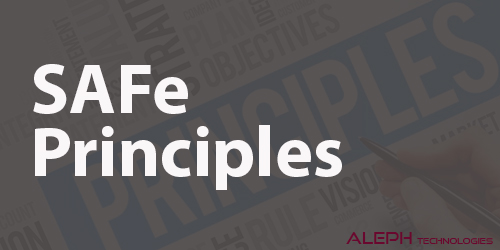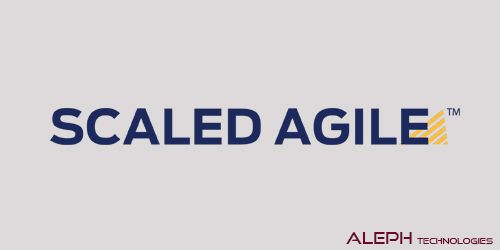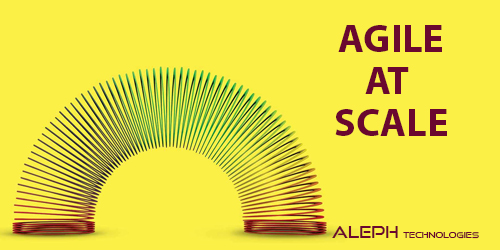Scaled Agile Framework (SAFe): What Is It And How Do You Use It?
Mar 17, 2024
Aleph Technologies
5 minutes read
0 comments
854 views
The Scaled Agile Framework (SAFe), developed by Scaled Agile, is an enterprise-scale development methodology that combines Lean and Agile principles within a templated framework. Advocates of SAFe highlight its significant benefits, including increased employee engagement, enhanced productivity, faster time-to-market, and overall higher quality. 🚀
Scaled Agile
Scaled agile
In this article, we'll delve deeper into what SAFe is, how it's typically implemented, and the advantages and disadvantages of using this scaled agile framework throughout the software development life cycle. Let's explore! 🔍
What is Scaled Agile Framework?
SAFe heavily relies on the core principles of Lean and Agile, which are adapted to form the nine SAFe Lean-Agile Principles:
- Take a monetary view: Delivering the best value and quality in the shortest lead time requires a fundamental understanding of the economics of the system under development. 💰
- Apply systems thinking: SAFe applies systems thinking to the organization building the system, the system in progress, and how it operates in its end-user environment. 🔄
- Assume variability; preserve options: Lean systems engineers maintain multiple requirements and design options for a longer period, using observational data to narrow focus and achieve better economic outcomes. 🛡️
Agile Release Trains (ART):
An Agile Release Train (ART) is a fundamental concept within the scaled agile framework. It serves as the primary value delivery mechanism for SAFe. Agile Teams, comprising individuals focused on defining, building, and testing solutions within a short timeframe, form the core of an ART. This self-organizing, stable group of Agile Teams collaboratively plans, commits to, and executes solutions together, aligned with the organization's core Value Streams to deliver promised value effectively. 🚂
Program Level:
The Program Level is another crucial concept in SAFe, where development teams and resources are linked to a significant, ongoing improvement mission. This level, encompassing teams, components, and activities, revolves around a specific ART, ensuring a continuous flow of incremental, value-creating releases. 🎯
Core Values of SAFe:
- Alignment: Emphasizes global alignment over local focus, with teams prioritizing overarching goals over individual tasks. This extends to Agile Release Trains emphasizing vision and program objectives over team goals, and Value Streams focusing on business portfolio value contributions. 🌐
- Built-in Quality: SAFe incorporates various built-in quality practices to ensure consistent high standards of quality in every element and incremental build. 🌟
- Program Execution: Each Agile Release Train should consistently deliver value, with the Program Level providing roles and guidance to support value generation. 🛠️
SAFe Implementation:
Implementing SAFe effectively requires a strategic approach:
- Train Implementers: Utilize internal and external mentors and coaches to educate and deploy SAFe practices throughout the organization. 👩🏫
- Prepare Teams: Establish Agile Teams trained in Lean, Agile, and SAFe standards. 🚀
- Launch Agile Release Trains: Form Agile Teams into ARTs, creating models for target planning, program execution, program increment planning, and other elements essential for a successful Agile Release Train. 🚀
Add Your Comment
Related posts
-

Understanding SAFe Principles: A Comprehensive Guide 🚀
Mar 25, 2024 -

Understanding Scaled Agile (SAFe) and Disciplined Agile Delivery (DAD)
Mar 25, 2024 -

Are Agile Methodologies Truly Agile? Debunking the Myth
Mar 25, 2024 -

Agile at Scale - Why Now? 🔄
Mar 22, 2024

Please login to check comments